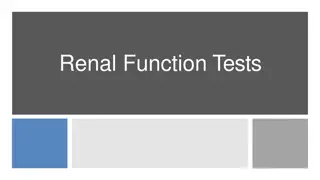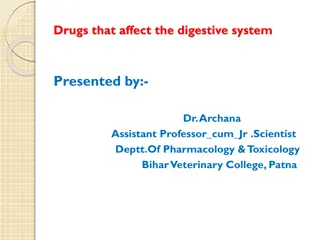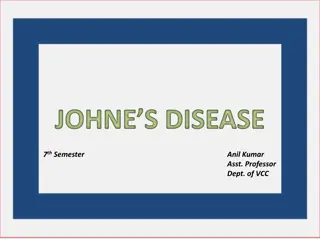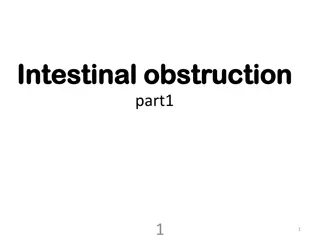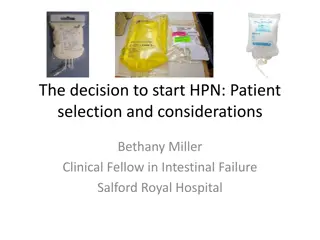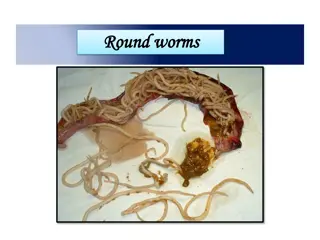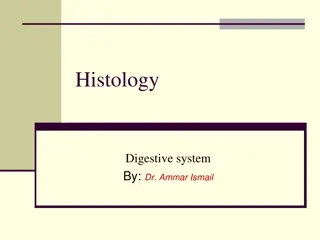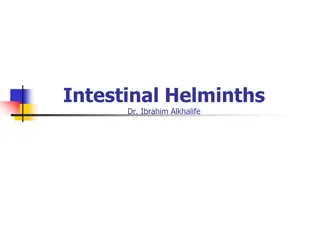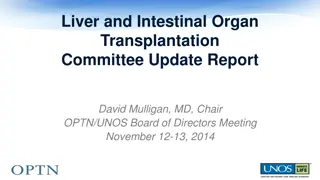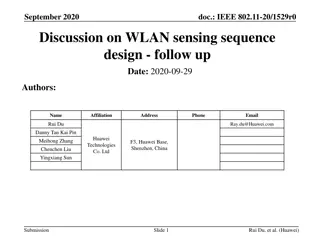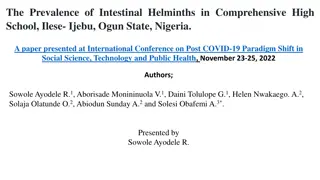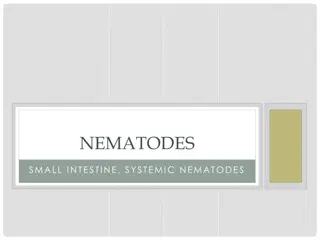Understanding Diarrhoea and Intestinal Function
Diarrhoea is characterized by increased fecal volume or frequency of defecation, impacting the normal physiologic functions of the small intestine such as motility, secretion, absorption, and digestion. The process involves various enzymatic actions in the stomach, duodenum, and small intestine, followed by absorption of nutrients and water. Additionally, the colon plays a crucial role in reabsorbing water and minerals from fecal material. Understanding these processes is essential for managing diarrheal diseases effectively.
Download Presentation

Please find below an Image/Link to download the presentation.
The content on the website is provided AS IS for your information and personal use only. It may not be sold, licensed, or shared on other websites without obtaining consent from the author.If you encounter any issues during the download, it is possible that the publisher has removed the file from their server.
You are allowed to download the files provided on this website for personal or commercial use, subject to the condition that they are used lawfully. All files are the property of their respective owners.
The content on the website is provided AS IS for your information and personal use only. It may not be sold, licensed, or shared on other websites without obtaining consent from the author.
E N D
Presentation Transcript
D DIARRHOEA Dr. Anil Kumar Asst. Prof. VCC, BVC, Patna VCP-II, 4th Professional
Diarrhoea Diarrhoea is defined as increased volume or fluidity of faeces or increased frequency of defecation. Normal physiologic functions of the small intestine: Motility Secretion Absorption Digestion Different electrolyte concentrations added intestinal contents Propulsion and Mixing of food Selective uptake of products of digestion along with water and electrolytes Breaking down ingesta into compounds simpler to
Food enters the stomach leads to the production of semj-fluid chyme with the help of combination of an acid environment, pepsin proteolytic activity and active gastric motility. Then it passed to duodenum in controlled quantities and also receives intestinal and pancreatic secretions and bile, which are mixed with chyme. Pancreatic secretions (sodium bicarbonate)neutralizes gastric acid and also releases lipase, amylase and trypsin Bile contains bile salts and bile pigments, but the bile salts are important for the emulsification of undigested fats into micelles, which greatly increases exposure to the fat digesting enzyme lipase and produce free fatty acids and monoglycerides Carbohydrate digestion is initiated by salivary amylase and contiJ1ued by pancreatic amylase.
The produced disaccharides and oligosaccharides, which are further digested by disaccharidase (lactase and sucrase) and oligosaccharidase enzymes in the small intestinal brush border. Monosaccbarides are absorbed into the mucosal cell by co- transport with sodium (glucose, galactose) or by facilitated diffusion (fructose). Protein digestion is initiated by pepsin in the stomach and continued by pancreatic proteolytic enzymes (including trypsin and chymotrypsin) and by peptidases of the intestinal brush border. Amino acids are absorbed into the mucosal cell by various carriers and enter the blood stream Mixing of ingesta and secreted digestive components in the small intestine is facilitated by segmental contraction of the bowel wall, which promotes digestion and absorption at the brush border by maximizing contact with luminal contents.
lngesta is passed distally along the intestine by peristaltic waves and finally this material enters the colon via the ileo-colic valve The storage and co-ordinated elimination of faecal material and dehydration of faeces (by absorbing approximately 90% of the water entering) through Large intestine The colon only accounts for approximately 10-15% of total water absorption in the gastrointestinal tract (jejunun and ileum) The net flux of water through the gastrointestinal tract is at least 0.15 1 kg-1 bodyweight day The major solutes in diarrhea fluid are sodium, chloride, organic anions, and potassium. During diarrheal diseases the most important source of potassium loss is via urine, mediated by aldosterone released in response to extracellular fluid volume depletion Mild metabolic acidosis and hypokalemia are the most common acid-base and electrolyte alterations observed in patients with acute small intestinal disease and diarrhea.
Causes of Diarrhea: Mechanism or Disease The mechanisms: Abnormal (primarily sodium), Malabsorption Abnormal intestinal motility most common fluid secretion
Types of diarrhoea: Secretory diarrhoea Osmotic diarrhoea Secretory diarrhoea: A diarrhoea resulting from net movement of fluid into the gut lumen despite fasting Faeces areisotonic with plasma, watery and alkaline, and the volumes produced are usually large. The faeces are alkaline because sodium and bicarbonate ions are secreted by the ileum. Acute secretory diarrhoea is always caused by a bacterial infection Osmotic diarrhoea: A diarrhoea where the faeces may have high osmolality may also be thought of as a diarrhoea caused by malabsorption and maldigestion.
Faecal smaller secretory and the diarrhoea is reduced or abolished by fasting. Viruses are one cause of osmotic diarrhoea Acidosis is an important consequence diarrhoea Death from severe diarrhoea in the calf occur potassium cardiotoxicosis The systemic consequences of diarrhoea volume than diarrhoea is in LOSS OF ECF Contraction of plasma volume Reduced arterial blood pressure Reduced Renal Function Reduced Tissue Perfusion of Reduced H ion excretion Increased anerobic metabolism on muscle function. Heart falls Decreased amplitude, or loss of the P wave Lethal effects acute ACIDOSIS cardiac due to rate H+ /K+ Exchange HYPERKALEMIA DEATH
DIAGNOSTIC CONSIDERATIONS: Physical examination Assessment of hydration status, Severity of volume depletion and Initial fluid replacement needs Assessment of stool characteristics (presence of blood or mucus, odor, color, consistency) Microscopic (Direct Smear, Fecal Flotation, Stained Smear) Immunologic Techniques (Parvovirus, C. parvum, Giardia spp., and C. perfringens). Electron Microscopy. Electron microscopy can be used to detect viral particles in feces of dogs and cats with GI signs of disease
MANAGEMENT OF ACUTE DIARRHEA: Correction of Fluid and Electrolyte Restoration circulating fluid volume is an immediate priority, both to prevent renal impairment and to minimize further GI injury. The fluid of choice is such as lactated Ringer s solution or Normosol-R or 0.9% saline solution. Imbalances: of normal functional
Antidiarrheal agents: Acute diarrhea of nonbacterial origin (dietary changes): Narcotics like paregoric, diphenoxylate (Lomotil), or loperamide (increasing segmental contractions of the small and large intestine) Neither diphenoxylate nor loperamide should be used in patients with viral enteritis, because delayed intestinal motility may predispose to the development of sepsis. Salicylate-containing drugs, (bismuth subsalicylate),may be beneficial for treatment of prostaglandin-mediated diarrhea. Antiemetic medication: Chlorpromazine (0.2-0.6 mg/Kg BW, IM X3), have wide safety margin and is a potent antiemetic Chlorpromazine may precipitate hypotension in dehydrated patients, so not to be given before fluid replacement in volume- depleted patients Metoclopramide (Reglan @ 0.2-0.6 mg/Kg BW, SC X3 ) given subcutaneously or as a constant intravenous infusion (0.04-0.08 mg/Kg/hr IV).
Ondansetron @0.1-0.2 mg/Kg BW slow IV two to three times a day
Source: Handbook of Small Animal Gastroenterology, 2nd Edn. Elsevier Science (USA). Bovine Medicine Diseases and Husbandry of Cattle Second edition THANKS




